Smith, John (McKechnie Section 4)
See also Section Five
Jackson (Dictionary) records a J. Smith and a T. Smith as profilists working at this period in Edinburgh. Recent research, however, has established that the former (whose first name is now known to have been John) was the only profilist working in Edinburgh at this time; Jackson, therefore, refers to the same artist in two entries.
The Edinburgh and Leith Post Office Directories give the following entries for Smith:
1786-88 Smith, John, Hair Worker, North Bridge Street
1788-90 Smith, John, Miniature, Profile, Hair and Pearl Worker, Milne's Square
1793-94 Smith, John, Miniature, Profile, Hair and Pearl Worker, Infirmary Street
These entries indicate that Smith did not work as a profilist in Edinburgh until 1788, also that, while he was at North Bridge Street (the only address which has previously been recorded) he worked only as a hair and pearl setter for jewellery pieces and did not begin silhouette work until he moved to Milne's Square.
Jackson mentions a reference to an advertisement (said to have been issued by Smith) in the Caledonian Mercury (26 July 1788), taken from the unpublished notes by F. and G. B. Buckley (Victoria and Albert Museum, London). The only mention of painting in this issue of the Caledonian Mercury, however (the advertisement quoted below), refers neither to silhouettes nor to miniatures, and names no artist:
PORTRAIT PAINTING,
FROM ONE GUINEA TO FIVE GUINEAS, Done in the best manner, and to any size, BY AN ARTIST FROM LONDON. If not to satisfaction, will return the Money. Enquire at the Publisher of this paper.
John Miers worked in Edinburgh from about 18 October 1786 until the autumn of 1788. It is possible that Smith was employed by Miers during his stay in Edinburgh to make the hair and pearl fittings for those of his silhouettes which were set as lockets, and that this contact prompted Smith to extend his work into the field of profiles. There is no evidence that he received lessons from Miers, or worked for him as a profilist. It seems to me unlikely that Smith was taught by Miers, and worked for him, in Leeds (before Miers arrived in Edinburgh), since, as the directory entries quoted above show, he did not take up silhouette work until 1788.
A unique feature of Smith's work is that he painted some of his profiles on plaster with a convex surface, which fits neatly against the convex glass in which it is framed. These convex plaster slabs were probably moulded to their shape against a convex glass. A few silhouettes are painted on flat slabs of plaster.
The slabs of plaster used by Smith vary in size from 3½ x 2½ in. to 3½ x 2¾ in.
On most profiles of men, both the waistcoat and the shirt-frill are painted in thinned transparency (apart from Thomason, no other late eighteenth-century silhouette artist, working on plaster, showed waistcoats in this way). On one example, the lapel of the frock was likewise rendered in thinned pigment.
1395
Smith painted profiles of women during the time of the à la conseilleur hair style, which he could not paint in the flowing manner of John Miers or Samuel Houghton (another Edinburgh artist). On Smith's work, this style is shown merely as a series of scallops, and the curls are indicated merely by some
smudging outside the scallops. The veiling which women often wore with this hair-style is almost always shown by Smith as terminating in a sharp point well below the bust-line termination at the back. Smith used a characteristic method of rendering the base of the handkerchief which was much in fashion to cover the décolletage: a thick line of shading, crossed by a vertical wavy line, presumably intended to represent the gathering of the handkerchief at the bosom. For bows, Smith resorted to the arrow shape which was typical of the period; he painted them much in the manner of John Miers in c. 1786. A peculiar feature of Smith's profiles of women is their small size; most of them measure no more than 2 in. in height, whereas those by Miers usually measure about 2½ in. Smith's profiles of children are poor, because of his lack of skill in painting long hair.
All bust-line terminations are of the usual concavity/convexity type; the front convexity plunges, though less markedly than on the work of another Edinburgh artist, George Bruce.
All work examined has been seen in oval hammered brass frames, with convex glass.
One trade label is recorded; most examples (including the illustrated label) appear dark. The text reads as follows:
STRIKING LIKNES'S
in Miniature Profile by
J. SMITH
EDINBURGH
Reduced on a Plan entirely new, in which the most exact symmetry and animate expressions of the features are preserved
Time of Sitting One Minute
The Original Shades are kept and those once taken, can be supplied with any number of duplicates, such as have Shades by them may have them copied or reduced to any Size, and drest in the Present Taste.
N.B. Hair and Pearl Work for Rings, Lockets, Pins & Bracelets executed to any patern or description [sic].
Ills. 1394-1400, 1451
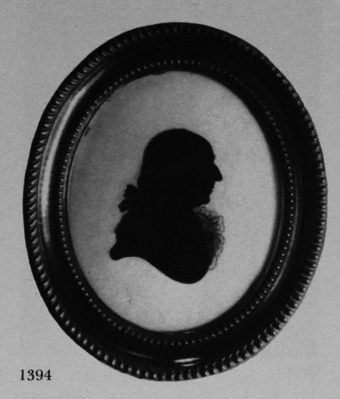
Unknown man
Silhouette painted on convex plaster
c. 1788
3 ½ x 2 ½ in./90 x 64mm.
Trade label
Frame: oval, hammered brass, with convex glass
Author’s collection
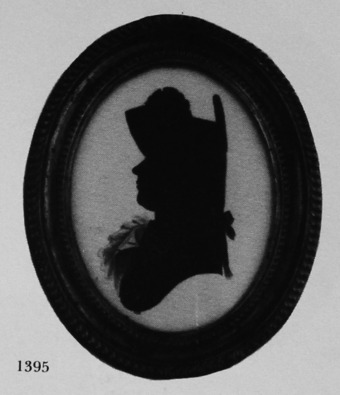
Unknown man
Silhouette painted on convex plaster
c. 1788
3 ½ x 2 ½ in./90 x 64mm.
Trade label
Frame: oval, hammered brass
By courtesy of Sotheby Parke Bernet and Company, London

Unknown woman
Silhouette painted on convex plaster
c. 1788-89
3 ½ x 2 ½ in./90 x 64mm.
Trade label
Frame: oval, hammered brass, with convex glass
T. E. F. Sainsbury collection
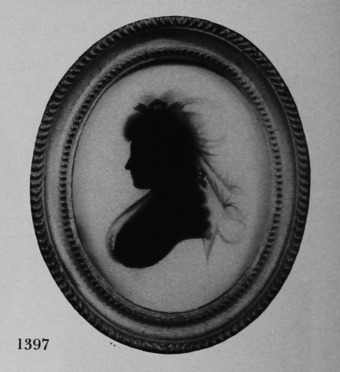
Unknown woman
Silhouette painted on convex plaster
c. 1788-91
3 ½ x 2 ¾ in./90 x 70mm.
Trade label
Frame: oval, hammered brass
Characteristic features are the sharp point which the sitter’s headwear is terminated at the back, and the shading on the base of the handkerchief on the left (see also 1399).
J. A. Pollak collection
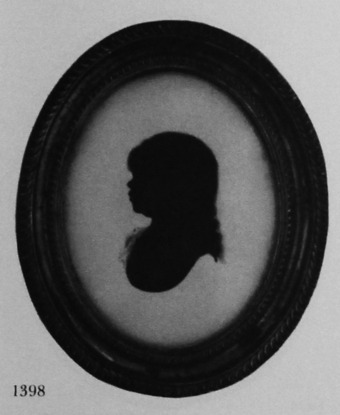
Unknown girl
Silhouette painted on convex plaster
c. 1788-92
3 ½ x 2 ½ in./90 x 64mm.
Trade label
Frame: oval, hammered brass
By courtesy of Sotheby Parke Bernet and Company, London

Mrs Maclean
Silhouette painted on convex plaster
c. 1790
3 ½ x 2 ¾ in./90 x 70mm.
Trade label
Frame: oval, hammered brass
From the collection of the late J. C. Woodiwiss
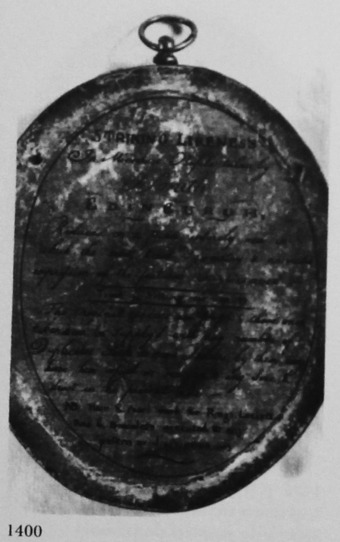
Trade label of John Smith, from the silhouette illustrated in 1396.
T. E. F. Sainsbury collection
Detail
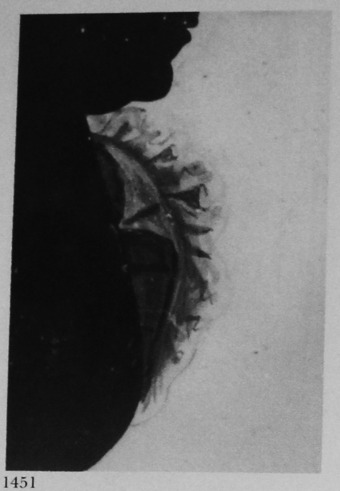
Shirt-frill. Detail form a silhouette of a man by John Smith. It is difficult to make general comments on the rare work of this artist, but the line which surrounds the outlines of the frill and the waistcoat appears to be an individual feature. (1394)
